Contexts of the Interview
In this exclusive interview, Professor Carlyle Thayer, a leading expert on Indo-Pacific geopolitics, shares his insights on the evolving power dynamics in the region. He discusses historical precedents, the current security landscape, and the future of strategic alliances such as QUAD and AUKUS(Australia, UK, US). Dr. Thayer examines the increasing militarization of the Indo-Pacific Geopolitics, the role of major powers, and how diplomacy can still play a role in maintaining regional stability.
He also provides an in-depth analysis of India’s strategic autonomy, ASEAN’s centrality, and Vietnam’s balancing act in great power competition. With a focus on China’s expanding influence through the Belt and Road Initiative (BRI) and the potential transformation of global order, this interview sheds light on the key geopolitical shifts shaping the future of the Indo-Pacific.
An Interview by Nayan Jyoti Kalita, Founder, HegemonIQ.
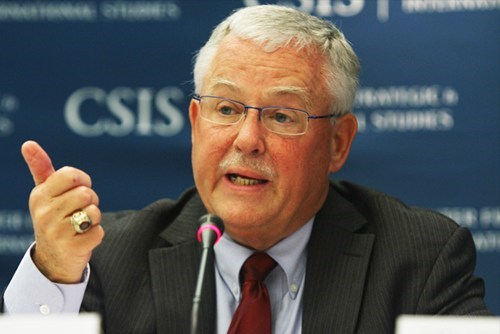
IN CONVERSATION with Professor Carlyle Thayer
HegemonIQ: You have spent decades analyzing geopolitics, engaging with policymakers, and observing power shifts in the Indo-Pacific/South East Asia. If you could have a front-row seat to any historical geopolitical event in the region, which one would you choose and why?
Carlyle Thayer: “I would pick the Bandung Conference held in Indonesia in April 1955. This was after the Second World War and the onset of a global process of decolonisation.
The Bandung Conference was co-hosted by newly independent Indonesia (1945), India and Pakistan (1947), and Burma and Sri Lanka (1948). It was attended by a total of twenty-nine countries from Asia, Africa and the Middle East.
Looking back, the Bandung Conference was an embryonic reflection of today’s Indo-Pacific Geopolitics – Japan, China, Philippines, Vietnam, Cambodia, Laos, Thailand, Burma, Indonesia, Sri Lanka, India, and Pakistan.
The Bandung Conference was heavily influenced by the Five Principles of Peaceful Coexistence adopted by China and India in 1954. The final communique of the Bandung Conference called for the promotion of economic and cultural cooperation, self-determination for dependent peoples, peaceful co-existence, and world peace based on ten principles:
- Respect for fundamental human rights and for the purposes and principles of the Charter of the United Nations.
- Respect for the sovereignty and territorial integrity of all nations.
- Recognition of the equality of all races and of the equality of all nations large and small.
- Abstention from intervention or interference in the internal affairs of another country.
- Respect for the right of each nation to defend itself singly or collectively, in conformity with the Charter of the United Nations.
- (a) Abstention from the use of arrangements of collective defence to serve the particular interests of any of the big powers.
(b) Abstention by any country from exerting pressures on other countries. - Refraining from acts or threats of aggression or the use of force against the territorial integrity or political independence of any country.
- Settlement of all international disputes by peaceful means, such as negotiation, conciliation, arbitration or judicial settlement as well as other peaceful means of the parties’ own choice, in conformity with the Charter of the United Nations.
- Promotion of mutual interests and co-operation.
- Respect for justice and international obligation.
I picked the Bandung Conference because in 1955 newly independent states were under pressure to take sides in the Cold War and now, seventy years later, states in the Indo-Pacific are faced with similar pressures to take sides involving rivalry between the major powers. I am interested in whether the enduring values adopted by the Bandung Conference provide sufficient basis for non-alignment today.”
HegemonIQ: The Indo-Pacific has seen rising militarization, from China’s naval expansion to India’s increasing defense collaborations and the U.S. reinforcing its Pacific presence. Are we heading toward an unavoidable arms race, or is there still space for diplomacy to ease tensions?
Carlyle Thayer: An arms race is already underway in the Indo-Pacific characterised by an action-reaction cycle precipitated by China’s military build-up and North Korea’s ballistic missile testing. These actions have provoked India, Japan, Taiwan, Australia, South Korea and the Philippines to increase defence spending. These countries are building up ammunition stocks and acquiring anti-air, missile and drone defences; unmanned aerial vehicles/drones, long-range precision strike missiles, submarines and other military capabilities.
The arms build-up by major powers in the Indo-Pacific is aimed at deterring China from using force, particularly against Taiwan.
Because of the importance of the Indo-Pacific as the engine of global economic growth and European perceptions that China is a systemic rival, the United Kingdom, France and Germany have stepped up arms sales and naval deployments to the region to protect sea lines of communication.
An arms race and diplomacy are not necessarily antithetical but can be complimentary. The election of Donald Trump and his America First policies has provided new ground for antagonists in the Indo-Pacific to seek common ground to minimise the impact of Trump’s tariffs on disrupting supply chains and destabilising the global economy.
(Also Read: India’s position on Climate Change: The emerging voice of Global South)
HegemonIQ: India has carefully balanced its strategic autonomy while strengthening Quadrilateral Security Dialogue (QUAD) partnerships. But as security challenges grow, do you think India can afford to remain non-aligned, or is it gradually shifting toward a more Western-centric defense posture?
Carlyle Thayer: Prime Minister Modi met President Donald Trump at The White House on 13 February 2025. Their Joint Statement clearly illustrated India’s shift towards a closer defence alignment with the United States under their Comprehensive Global Strategic Partnership.
Modi and Trump agreed to launch a new initiative, the U.S. India COMPACT (Catalyzing Opportunities for Military Partnership, Accelerated Commerce & Technology) for the 21st Century. Under the COMPACT India and the U.S. will expand defence sales including F-35 stealth fighters, negotiate a Reciprocal Defense Procurement Agreement, and conclude a new ten-year Framework for the U.S. India Major Defense Partnership in the 21st Century.
However, under Prime Minister Modi India will continue to pursue a policy of multi-alignment globally through BRICS, G20, and G-7 observer and with strategic partners Russia and the European Union.
India will also pursue a policy of multi-alignment in the Indo-Pacific Geopolitics and its sub-regions – Persian Gulf, Western Indian Ocean littoral, Indian Ocean, Southeast and East Asia.
India will give priority to its Neighbourhood First policy with key regional states and multilateral arrangements including the South Asian Association for Regional Cooperation (SAARC), Indian Ocean Regional Association (IORA), and Bay of Bengal Initiative for Multi-Sectoral Technical and Economic cooperation (BIMSTEC).
India will also pursue a multi-alignment policy in the Indo-Pacific through the Quad and in Southeast Asia through its 2022 comprehensive strategic partnership with the Association of Southeast Asian Nations (ASEAN).
HegemonIQ: The QUAD has expanded beyond security—engaging in technology, supply chain resilience, and infrastructure projects. However, some argue it lacks institutional depth and military coordination. Do you see QUAD evolving into a formalized security alliance, or will it remain a flexible coalition.
Carlyle Thayer: The Quad is unlikely to become as formalized security alliance because of India’s long-standing opposition to alignment and President Donald Trump’s well known distain of alliances.
Nevertheless, Donald Trump was quick off the mark to invite the foreign ministers of India, Japan and Australia to his inauguration and to host a meeting of Quad Foreign Ministers two days later. The Joint Statement by the Quad Foreign Ministers underlined their commitment “to strengthening maritime, economic, and technology security in the face of increasing threats, as well as promoting reliable and resilient supply chains.”
The fourth Quad leaders’ summit was hosted by President Joe Biden on 21 September 2024. The leaders’ Joint Statement listed nine major areas of cooperation: health security, humanitarian assistance and disaster relief, maritime security, quality infrastructure, critical and emerging technologies, climate and clean energy, cyber, space, and Quad Investors Network.
On 18 March 2025, India hosted the inaugural Quad Workshop on Pandemic Preparedness for Indo-Pacific Region where a number of initiatives were launched.
The Quad’s future direction will become clear after India hosts the fifth leaders’ summit later this year. It remains to be seen if the U.S. will continue to support all of the Quad’s major areas of cooperation since the Trump Administration gutted the U.S. Agency for International Development and cancelled many of its foreign assistance programs. Instead of militarizing the Quad, Trump is likely to continue to press its members to increase their defence budgets.
Q5. China’s economic influence through the Belt And Road Initiative(BRI) has reshaped regional power dynamics, particularly in the Indian Ocean and Pacific Islands. Despite U.S. and Indian efforts to provide alternatives, do you think QUAD or other regional players can match China’s economic outreach?
Carlyle Thayer: China’s big cash splurge on big infrastructure projects under the Belt and Road Initiative (BRI) subsided in the wake of the COVID-19 pandemic and a slowdown in China’s economic growth. Nevertheless, China continues to advance its strategic interests by opportunistically offering finance, for example to Cambodia (Funan Techo Canal), Cook Island ( infrastructure, ship-building, tourism, agriculture, technology, education and deep-sea mineral exploration) and Kiribati (deep sea mining).
(Connect to Professor Thayer through LinkedIn)
The Trump Administration’s decision to place on hold on all foreign assistance until a ninety-day review is completed, coupled with its decision to dismantle the U.S. Agency for International Development, withdraw from the World Health Organisation and the Paris Agreement on climate change raise doubts about continuing U.S. financial support for Quad initiatives designed to counter China BRI and “debt diplomacy.”
India, Japan and Australia all have their own overseas development assistance programs. It is doubtful they have the resources to fill the gaps arising from the Trump Administration’s cuts. Trump’s actions have created an opportunity for China to step in and demonstrate that the U.S. is unreliable.
Q6. Australia has deepened its security commitments with AUKUS(Australia, United Kingdom, United States), despite strong economic ties with China. Do you see Canberra navigating a middle path between its security and economic interests, or is it inevitably drifting toward full alignment with Western allies?
Carlyle Thayer: Australia will hold federal election on 3 May. Both the Labor Government and the Opposition Liberal Party are committed to the 1951 security treaty with the United States. China is Australia’s largest trade partner and both share an interest in mitigating Trump’s current tariffs and additional tariffs to be announced on 2 April.
There is bipartisan consensus in Australia that China is the main security threat in the Indo-Pacific. This view was reinforced recently when China sent a naval Task Group comprising a cruiser, frigate and resupply ship to conduct live-firing exercises in the Tasman Sea between Australia and New Zealand before circumnavigating Australia.
Although the Trump Administration has pressured Australia to raise defence spending to three percent of GDP, this is unlikely regardless of which party wins the May election.
AUKUS is viewed as the centre-piece of Australia’s defence policy. AUKUS has two pillars: acquisition of nuclear-powered submarines and advanced technology cooperation between Australia, the United Kingdom and the United States. Australia will also firm up its defence relations with Japan.
(Also Read: Balochistan: A Land of Riches, Betrayal and Resistance)
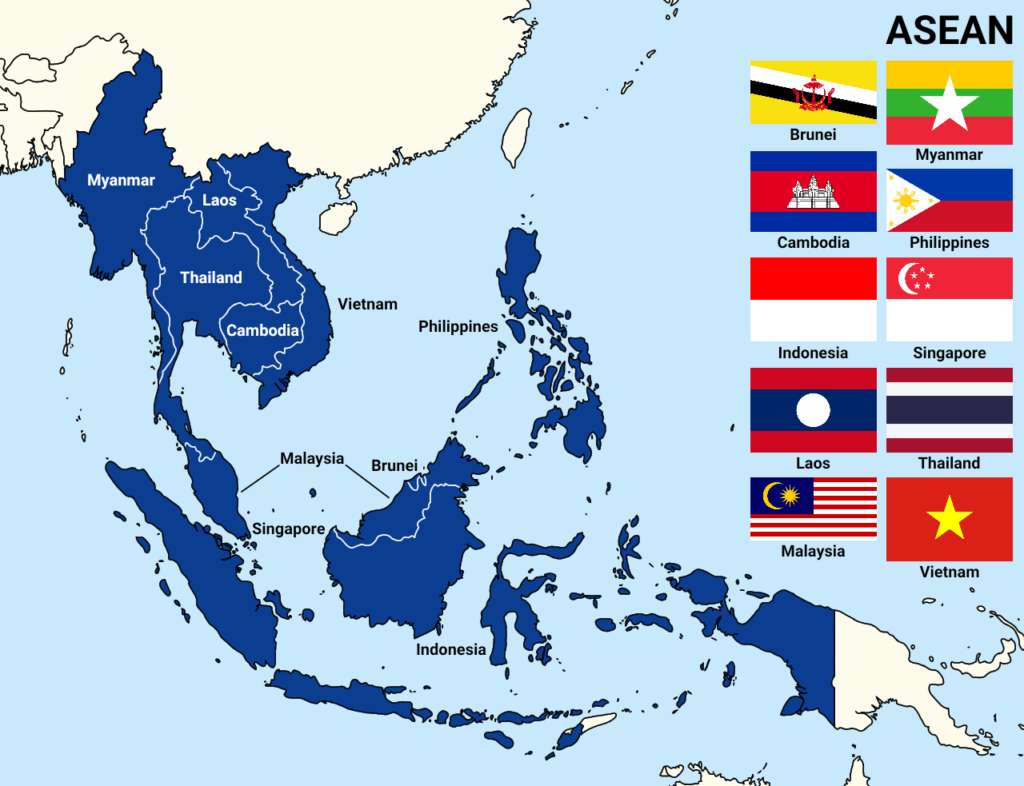
Q7. ASEAN has long emphasized “centrality” in regional affairs, yet internal divisions and strategic hesitations often weaken its effectiveness. In an era of growing geopolitical rivalries, do you see ASEAN playing a decisive role in Indo-Pacific security, or is it at risk of being sidelined?
Carlyle Thayer: Association of Southeast Asian Nations(ASEAN), through its ASEAN Outlook on the Indo-Pacific, asserts its centrality in the security architecture of the Indo-Pacific. ASEAN’s influence lies in its convening power to draw the major powers into its network of affiliated multilateral institutions – ASEAN Regional Forum, ASEAN Defence Ministers’ Meeting Plus, East Asia Summit – and six comprehensive strategic partnerships with Australia, China, India, Japan, South Korea and the United States.
ASEAN is well-positioned to play a major role in addressing non-traditional challenges to regional security. However, ASEAN is not structured to deal with traditional security issues such as nuclear proliferation, arms races, militarization of the South China Sea, and major power rivalry. ASEAN’s comprehensive strategic partners, as well as the Quad, all publicly support ASEAN’s centrality. While these institutional linkages mean ASEAN cannot be sidelined, ASEAN cannot play a decisive role in Indo-Pacific security where the core interests off a major power are concerned; the prime example is China’s use of intimidation and coercion against claimant states in the South China Sea.
Q8. Since you are widely regarded as a leading expert on Vietnam and its strategic role in the Indo-Pacific, how do you see Vietnam positioning itself in the ongoing power struggle? With its deepening ties to the U.S., India, and Japan, yet a complex relationship with China, can Vietnam serve as a model for other ASEAN nations navigating great power competition?
Carlyle Thayer: Vietnam will continue to pursue a four-pronged external policy of “multilateralizing and diversifying” and “cooperation and struggle” in its foreign relations, “four no’s” defence policy, and “independence, self-reliance, peace, cooperation and development.”
Vietnam has multilateralized and diversified its external relations though a hierarchy of forty-three partnerships rising from fourteen comprehensive partners, eighteen strategic partners, to the highest level of eleven comprehensive strategic partners (CSP).
Vietnam’s eleven CSPs include ¬– China (2008), Russia (2012), India (2016), South Korea (2022), United States (2023), Japan (2023), Australia (2023), France (2024), Malaysia (2024), Indonesia (2025) and Singapore (2025). All the CSPs promote defence and security cooperation.
Additionally, Vietnam has multilateralized and diversified its external relations through membership in multilateral institutions such as the United Nations (where it has served two terms as non-permanent member of the Security Council), ASEAN, APEC, World Trade Organisation and membership in fourteen Free Trade Agreements (ASEAN, European Union, Eurasia, Regional Comprehensive Economic Partnership, Comprehensive and Progressive Trans-Pacific Partnership etc.)
Under Vietnam’s policy of “cooperation and struggle,” Vietnam will cooperate with any country, regardless of its political system, for mutual benefit. Vietnam will struggle against any country that harms Vietnam’s national interests.
Vietnam’s four no’s defence policy was spelled out in its 2019 Defence White Paper: no joining military alliances, no siding with one country against another, no foreign military bases on or use of Vietnamese soil to carry out military activities against other countries, and no using force or threatening to use force in international relations.
Finally, the five objectives of Vietnam’s foreign policy are aimed at bolstering its strategic autonomy.
Vietnam today is playing an equal or stronger role in ASEAN than its original founding five members – Indonesia, Malaysia Philippines, Singapore, Thailand. Vietnam could well serve as a model for other ASEAN states save for one very important factor. With the exceptions of Singapore, Brunei and Laos, no other ASEAN members are as politically stable as Vietnam. Vietnam is able to plan strategically and consistently pursue the four-pronged strategy outlined above for five years into the future
Q9. If you had to predict a major surprise development in Indo-Pacific geopolitics over the next five years—something most analysts might be overlooking—what would it be?
Carlyle Thayer: The major surprise development that I envisage over the next five years is the reshaping of global order from confrontation among the major powers to contention and cooperation among the major powers based on a triumvirate arrangement dominated by the United States at the apex along with China and Russia.
The U.S. largely withdraws its military forces from Europe, Japan and South Korea. U.S. collective defence alliances atrophy and are replaced by transactional relations based on trade, investment, access to rare minerals, and technology cooperation.
Under the triumvirate, the world is gradually divided into spheres of influence after prolonged negotiation. Although points of contention remain among the United States, China and Russia neither views the other as an existential threat.
CONCLUSION
Dr. Thayer’s expert insights highlight the complex and rapidly shifting nature of Indo-Pacific geopolitics. The region is witnessing an ongoing arms buildup, deepening security collaborations, and economic competition, all of which have far-reaching implications for global stability. While security alliances and economic frameworks continue to evolve, diplomacy remains an essential tool for mitigating tensions. As major powers navigate their strategic interests, the role of regional players like India, ASEAN, and Vietnam will be crucial in shaping a balanced and stable Indo-Pacific. The future of the region will depend on the ability of nations to foster cooperation while managing competitive pressures in an increasingly multipolar world.
Carlyle A. Thayer Brief Biography
Carlyle Thayer is Emeritus Professor, University of New South Wales (UNSW) at the Australian Defence Force Academy in Canberra.
Thayer was educated at Brown University, holds an M.A. in Southeast Studies from Yale, and a PhD in International Relations from the Australian National University.
UNSW has a long-standing contract with the Commonwealth of Australia’s Department of Defence to provide tertiary-level education for its service institutions. Thayer began his career at the Royal Military College-Duntroon in 1979. He joined the tri-service Australian Defence Force Academy in 1985 and served as Head of the Department of Politics (1995-97). He was promoted to full Professor in 1998. In 1999, Thayer was given “leave in the national intertest” to take up a senior appointment for three years at the Asia-Pacific Center for Security Studies, U.S. Pacific Command in Hawaii. Upon return to Australia, he was appointed On-Site Academic Co-ordinator for three years at Australia’s senior defence course at the Centre for Defence and Strategic Studies at the Australian Defence College. He then served as Director of Regional Security Studies at the Australian Command and Staff College for three years.
In 2005, Thayer was appointed the C. V. Starr Distinguished Visiting Professor of Southeast Asian Studies at the School of Advanced International Studies, John Hopkins University, Washington D.C. In 2008, he was appointed the Margaret M. and Stephen H. Fuller Distinguished Visiting Professor of Southeast Asian Studies at Ohio University in Athens, Ohio.
Thayer has taken sabbatical leave at the Department of Political Science at Yale; Harvard’s Center for International Studies; Institute for Strategic and International Studies at Chulalongkorn University in Thailand; the Institute for Southeast Asian Studies in Singapore; the International Institute for Strategic Studies in London; and the Strategic and Defence Studies Centre at the Australian National University, Canberra.
Upon retirement in 2010, Thayer was conferred the title Emeritus Professor. He has been active since as Director of Thayer Consultancy, a small business registered in Australia in 2002 that provides political analysis of current regional security issues and other research support to selective clients.
Thayer is the author of over five hundred journal articles and book chapters. He is the author, co-author and co-editor of sixteen books and major monographs including: War By Other Means: National Liberation and Revolution in Vietnam, 1954-1960 (London and New York: Routledge [Taylor & Francis Group], 2022); Southeast Asia: Patterns of Security Cooperation, (Canberra: Australian Strategic Policy Institute, 2010); Beyond Indochina, Adelphi Paper 297 (London: Oxford University Press for the International Institute for Strategic Studies, 1995); Soviet Relations with India and Vietnam, 1945-1992 (Delhi, Bombay, Calcutta and Madras: Oxford University Press, 1993) with Ramesh Thakur, and eds. Reshaping Regional Relations: Asia-Pacific and the Former Soviet Union (Boulder, San Francisco and Oxford: Westview Press, 1993), with Ramesh Thakur.
(Disclaimer: Views and opinions expressed in this interview(Indo-Pacific Geopolitics: Exclusive Insights from Dr. Carlyle Thayer on Regional Dynamics and Strategy Challenges) are solely those of Dr. Carlyle Thayer and do not reflect the official stance of HegemonIQ. We provide this platform to encourage diverse perspectives and informed discourse. While we respect the insights of our esteemed interviewees, HegemonIQ neither endorses nor takes responsibility for any claims, accusations, or terminology used in this interview.)
We extend our sincere gratitude for your attention and dedication to reviewing the document titled Indo-Pacific Geopolitics: Exclusive Insights from Carlyle Thayer on Regional Dynamics and Strategy Challenges. Furthermore, we wish to acknowledge your valuable time spent delving into our publication on Indo-Pacific geopolitics. Thank you.

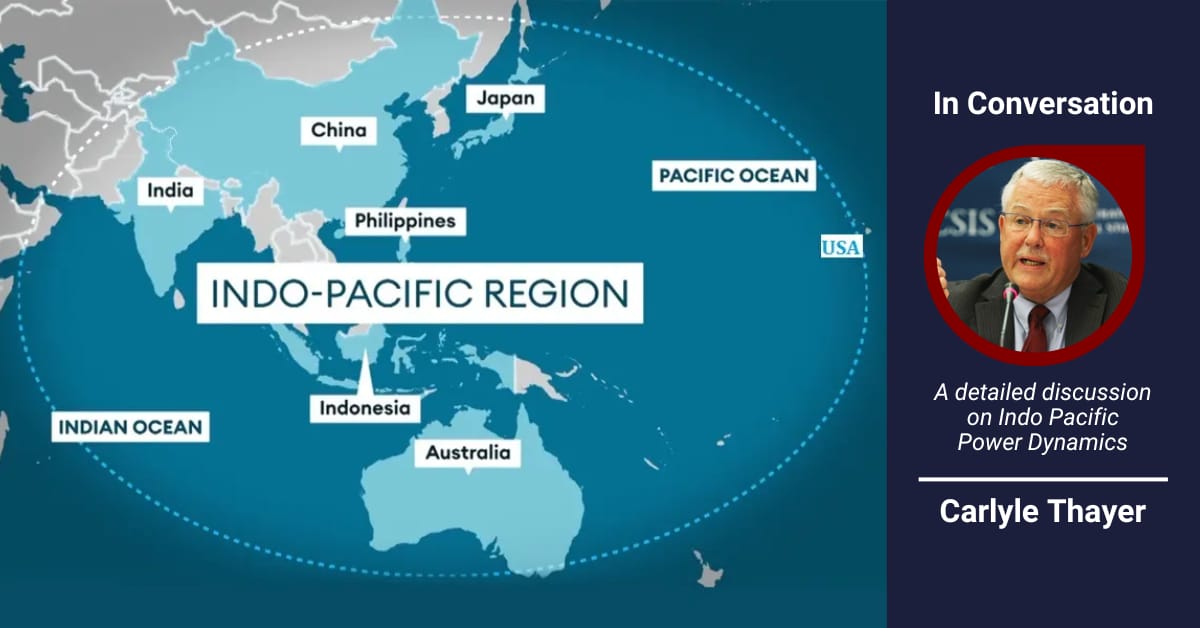
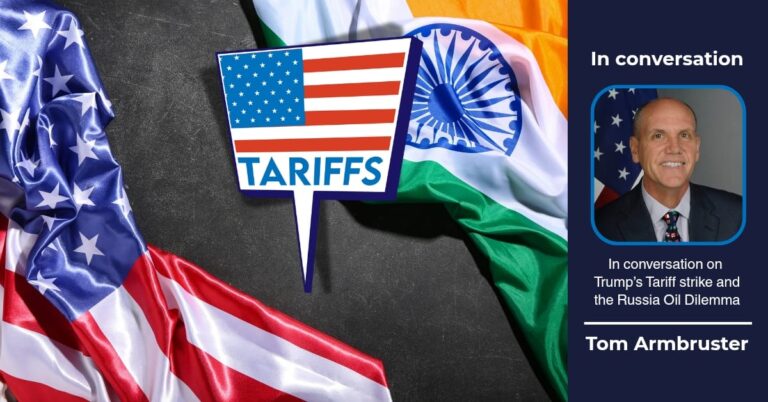
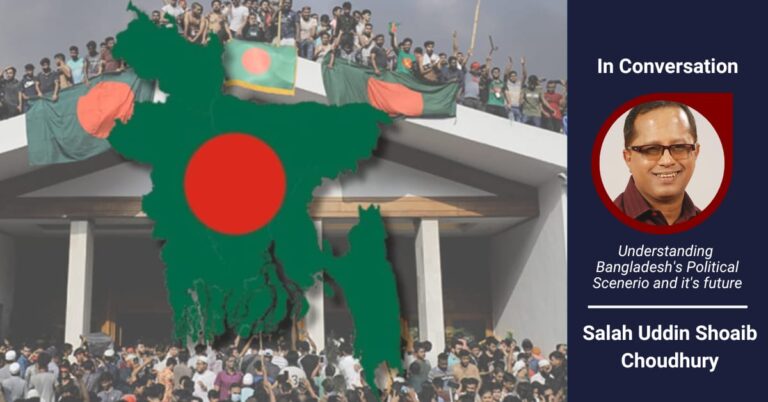
[…] (Also Read: Indo-Pacific Geopolitics: Exclusive Insights from Carlyle Thayer on Regional Dynamics and Strategy C…) […]
[…] (Also Read: Indo-Pacific Geopolitics: Exclusive Insights from Carlyle Thayer on Regional Dynamics and Strategy C…) […]
[…] Also Read: Indo-Pacific Geopolitics: Exclusive Insights from Carlyle Thayer on Regional Dynamics and Strategy C… […]
[…] Also Read: Indo-Pacific Geopolitics: Exclusive Insights from Carlyle Thayer on Regional Dynamics and Strategy C… […]